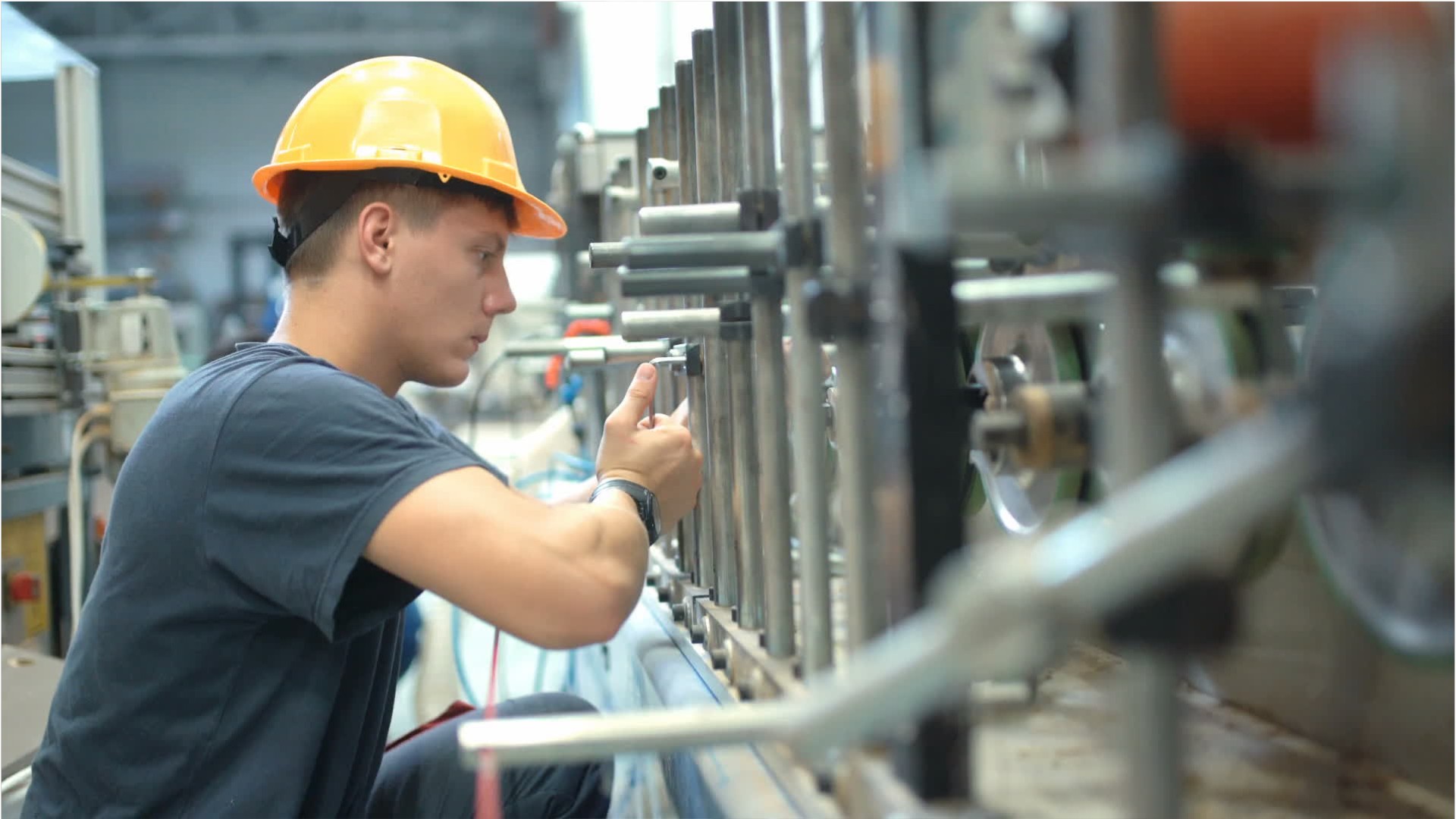Millwrights
Maintenance Millwright, Millwright, Millwright Foreman, Millwright Instructor
 Select a military branch to see samples.
No similar titles were found.
Select a military branch to see samples.
No similar titles were found.
Cannon Crewmember; Cavalry Scout; Combat Engineer; Combat Medic Specialist; Infantryman; M1 Armor Crewman; Wheeled Vehicle Mechanic
No similar titles were found.
No similar titles were found.
Advanced Machinery Repairman; Machinery Repairman
No similar titles were found.
What they do:
Install, dismantle, or move machinery and heavy equipment according to layout plans, blueprints, or other drawings.
On the job, you would:
- Replace defective parts of machine, or adjust clearances and alignment of moving parts.
- Align machines or equipment, using hoists, jacks, hand tools, squares, rules, micrometers, lasers, or plumb bobs.
- Insert shims, adjust tension on nuts and bolts, or position parts, using hand tools and measuring instruments, to set specified clearances between moving and stationary parts.
Knowledge
Engineering and Technology
- mechanical
- building and construction
Math and Science
- arithmetic, algebra, geometry, calculus, or statistics
- physics
Education and Training
- teaching and course design
Safety and Government
- public safety and security
Skills
Basic Skills
- thinking about the pros and cons of different ways to solve a problem
- keeping track of how well people and/or groups are doing in order to make improvements
Problem Solving
- noticing a problem and figuring out the best way to solve it
Technical
- figuring out what is causing equipment, machines, wiring, or computer programs to not work
- installing equipment, machines, wiring, or computer programs
Abilities
Hand and Finger Use
- hold or move items with your hands
- keep your arm or hand steady
Controlled Movement
- quickly change the controls of a machine, car, truck or boat
- use your arms and/or legs together while sitting, standing, or lying down
Spatial
- imagine how something will look after it is moved around or changed
Physical Strength
- lift, push, pull, or carry
Personality
People interested in this work like activities that include practical, hands-on problems and solutions.
They do well at jobs that need:
- Attention to Detail
- Dependability
- Cautiousness
- Perseverance
- Achievement Orientation
- Stress Tolerance
Technology
You might use software like this on the job:
Computer aided design CAD software
- Autodesk AutoCAD
- Dassault Systemes SolidWorks
Spreadsheet software
- Microsoft Excel
Electronic mail software
- Microsoft Outlook
Education
Education: (rated 2 of 5)
high school diploma/GED or
certificate after high school
usually needed
certificate after high school
usually needed
Job Outlook
Below Average
New job opportunities are less likely in the future.
Explore More
- Aircraft Structure, Surfaces, Rigging, & Systems Assemblers
- Boilermakers
- Engine & Other Machine Assemblers
- Industrial Machinery Mechanics
- Maintenance & Repair Workers, General
You might like a career in one of these industries:
See more details at O*NET OnLine about Millwrights.





